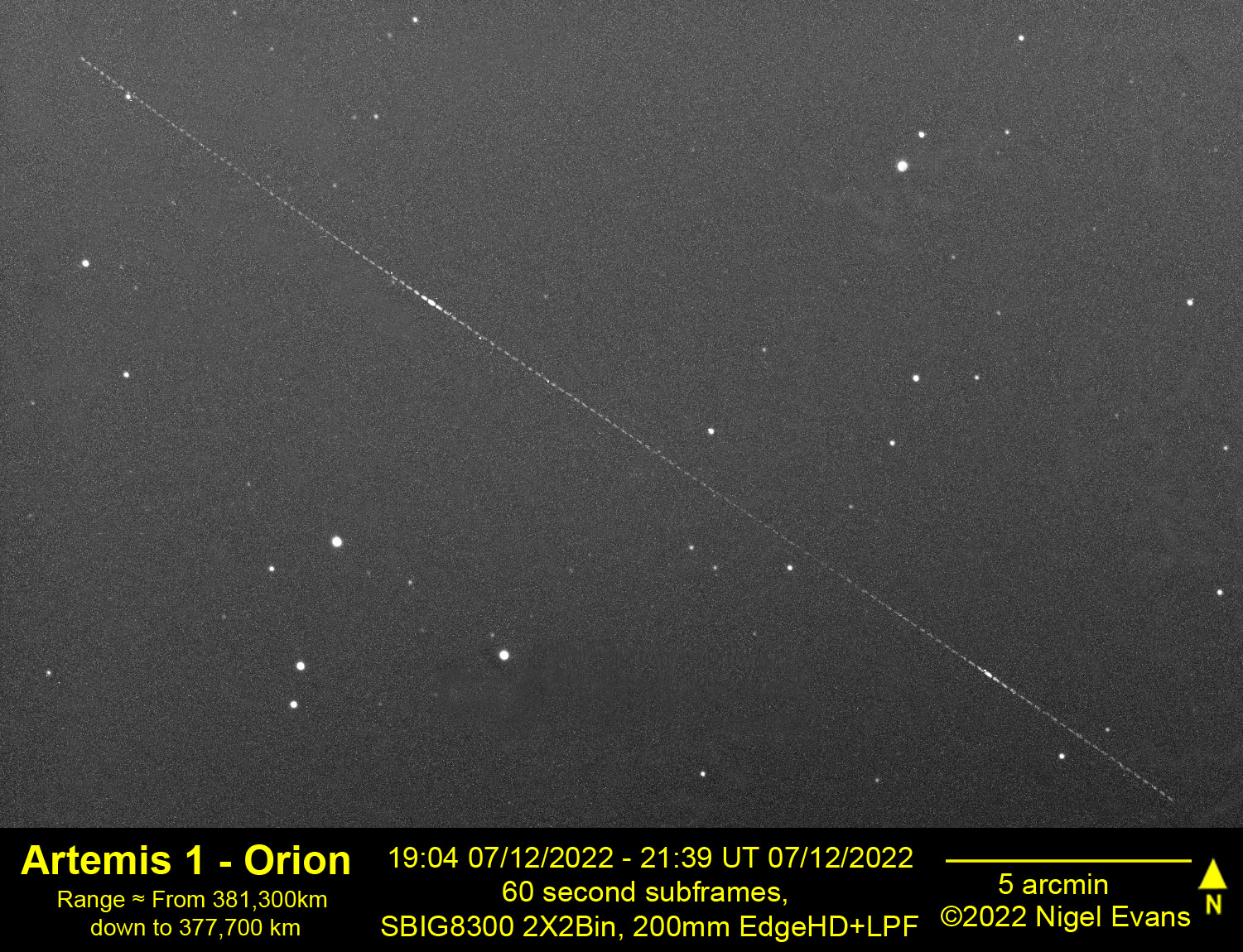
Orwell Astronomical Society (Ipswich)
Orion Crew Capsule of Artemis I Mission, 07-10 December 2022
On 16 November 2022, NASA launched the Artemis I mission from launch complex 39B at the Kennedy Space Center in Florida. The mission is the first in a series of increasingly complex missions to build a long-term human presence on the Moon. The mission includes the Orion crew capsule together with the Space Launch System (SLS).
Artemis I was launched towards the Sun, enabling it to capture stunning images of the full Moon and full Earth. However, it was not initially visible to Earthbound observers. In later phases of the mission, the Orion capsule became more easily visible, but the Moon was always nearby in the sky. On 05 December, Orion flew past the Moon for the last time, after which its motion was essentially towards the Earth, during which time it remained in the same part of the sky.
The night of 07-08 December provided the first opportunity for me to image the craft, albeit with a full moon only 30° distant. The apparent motion of the capsule was some 10 arcseconds per minute, so in the video it appears as a streak. The brightest stars in the video are around magnitude 11. The video shows a periodic variation in brightness of the craft, and this is easier to see in the composite still image under the video.
On the following night there was another opportunity to image the craft, now significantly dimmer at magnitude 15, moving at around 12 arcseconds per minute. At such a high apparent speed, a one minute exposure would show a significant amount of trailing. To overcome this I resorted to taking exposures of 20 seconds duration, then re-aligning them (centred on the craft) re-form images of 60 seconds duration. This approach resulted in stars appearing as triple streaks. The resultant video is below. It reveals a hint of periodic variation in brightness of the craft as it moves.
On the night of 09-10 December, Orion was moving at some 16 arcseconds per minute. To arrest the motion and produce a stronger image of Orion, I combined six 10 second exposures. The capsule seemed fainter tonight, except in the latter part of the clip where it brightened sharply.
On the night of 10-11 December, the craft was moving at 28 arcseconds per minute. It was clearly visible in exposures of 10 seconds duration. The following video shows two individual clips running together: the LH one is constructed from individual 10 second exposures and the RH one from composite frames formed from six 10 second exposures. The composite still underneath the video is formed from frames of the LH clip.
Nigel Evans